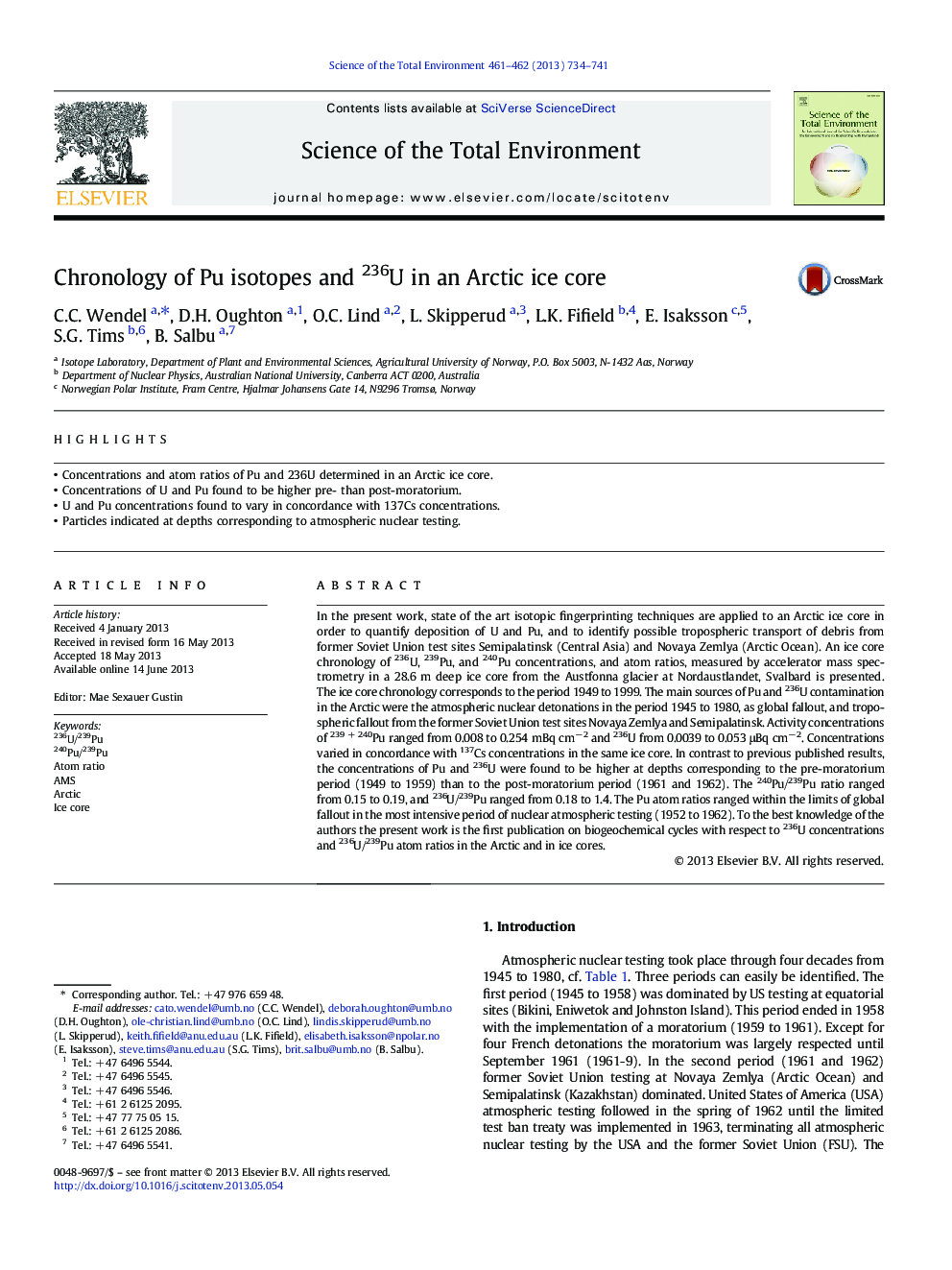| Article ID | Journal | Published Year | Pages | File Type |
|---|---|---|---|---|
| 6332034 | Science of The Total Environment | 2013 | 8 Pages |
Abstract
In the present work, state of the art isotopic fingerprinting techniques are applied to an Arctic ice core in order to quantify deposition of U and Pu, and to identify possible tropospheric transport of debris from former Soviet Union test sites Semipalatinsk (Central Asia) and Novaya Zemlya (Arctic Ocean). An ice core chronology of 236U, 239Pu, and 240Pu concentrations, and atom ratios, measured by accelerator mass spectrometry in a 28.6 m deep ice core from the Austfonna glacier at Nordaustlandet, Svalbard is presented. The ice core chronology corresponds to the period 1949 to 1999. The main sources of Pu and 236U contamination in the Arctic were the atmospheric nuclear detonations in the period 1945 to 1980, as global fallout, and tropospheric fallout from the former Soviet Union test sites Novaya Zemlya and Semipalatinsk. Activity concentrations of 239 + 240Pu ranged from 0.008 to 0.254 mBq cmâ 2 and 236U from 0.0039 to 0.053 μBq cmâ 2. Concentrations varied in concordance with 137Cs concentrations in the same ice core. In contrast to previous published results, the concentrations of Pu and 236U were found to be higher at depths corresponding to the pre-moratorium period (1949 to 1959) than to the post-moratorium period (1961 and 1962). The 240Pu/239Pu ratio ranged from 0.15 to 0.19, and 236U/239Pu ranged from 0.18 to 1.4. The Pu atom ratios ranged within the limits of global fallout in the most intensive period of nuclear atmospheric testing (1952 to 1962). To the best knowledge of the authors the present work is the first publication on biogeochemical cycles with respect to 236U concentrations and 236U/239Pu atom ratios in the Arctic and in ice cores.
Keywords
Related Topics
Life Sciences
Environmental Science
Environmental Chemistry
Authors
C.C. Wendel, D.H. Oughton, O.C. Lind, L. Skipperud, L.K. Fifield, E. Isaksson, S.G. Tims, B. Salbu,
